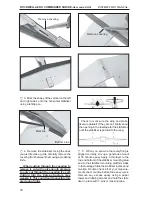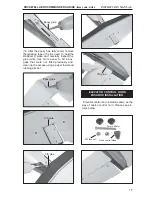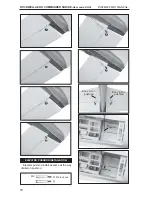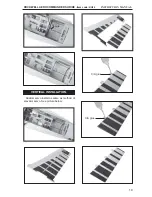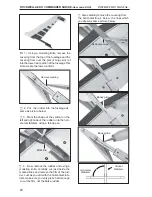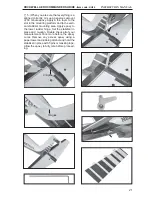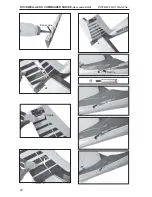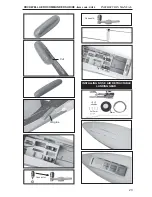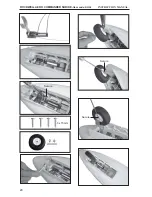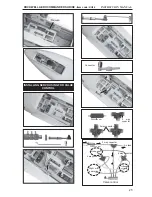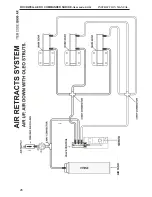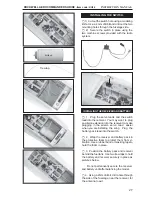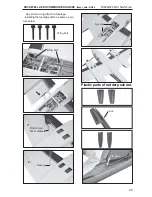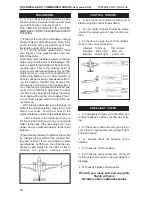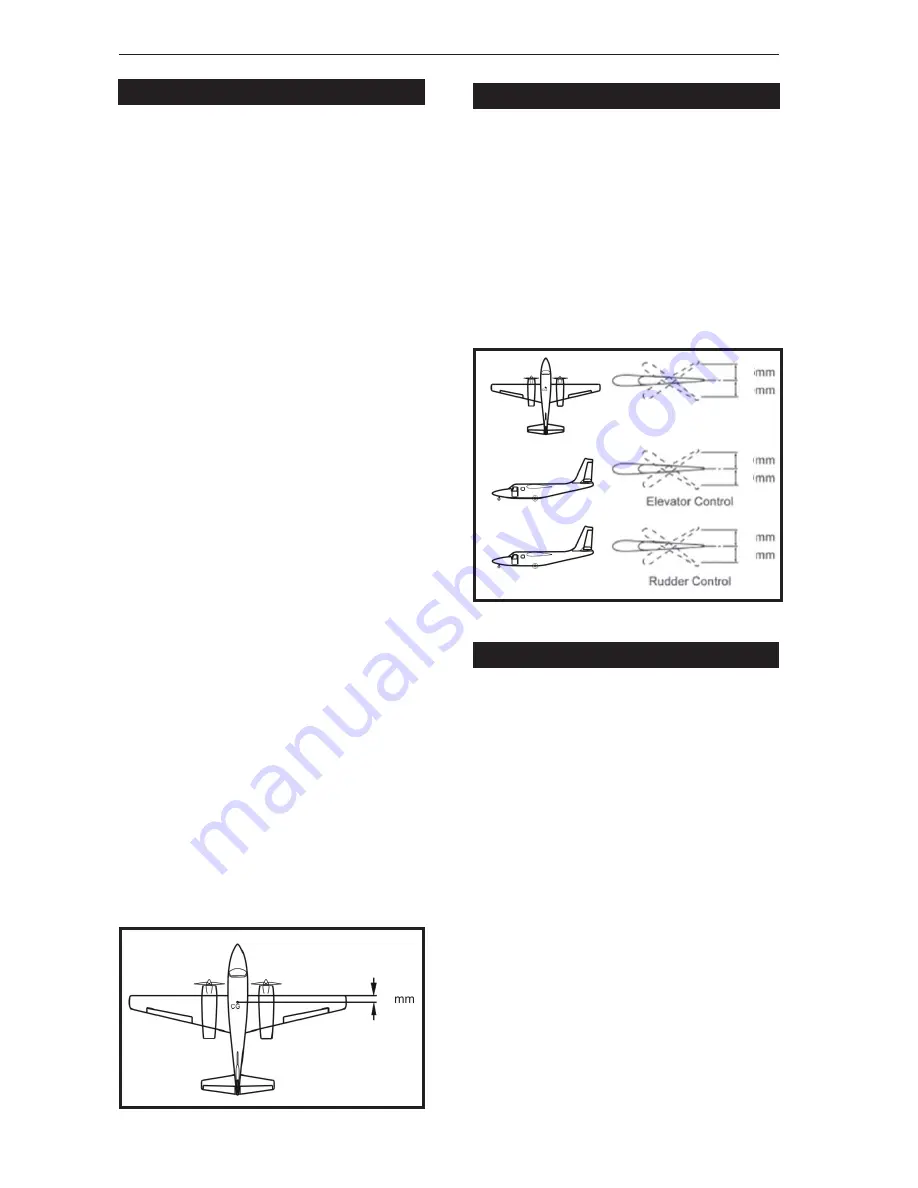
30
ROCKWELL AERO COMMANDER SHRIKE
-Item code:
BH90
INSTRUCTION MANUAL.
1) We highly recommend setting up a
plane using the control throws listed.
2) The control throws should be meas-
ured at the widest point of each control sur-
face.
3) Check to be sure the control surfaces
move in the correct directions.
Ailerons : 10mm up 10mm down
Elevator : 8mm right 8mm left
Rudder : 20mm right 20mm left
1) Completely charge your transmitter and
receiver batteries before your first day of fly-
ing.
2) Check every bolt and every glue joint in
your plane to ensure that everything is tight
and well bonded.
3) Double check the balance of the
airplane.
4) Check the control surface.
5) Check the receiver antenna . It should
be fully extended and not coiled up inside the
fuselage.
6) Properly balance the propeller.
PRE-FLIGHT CHECK.
We wish you many safe and enjoyable
flights with your
ROCKWELL AERO COMMANDER SHRIKE.
3. Turn the airplane upside down. Place
your fingers on the masking tape and care-
fully lift the plane .
1) It is critical that your airplane be bal-
anced correctly. Improper balance will cause
your plane to lose control and crash.
THE CENTER OF GRAVITY IS LOCATED
60MM BACK FROM THE LEADING EDGE OF
THE WING.
2) Mount the wing to the fuselage. Using a
couple of pieces of masking tape, place them
on the top side of the wing 60mm back from
the leading edge, at the fuselage sides.
BALANCING.
Accurately mark the balance point on the top
of the wing on both sides of the fuselage. The
balance point is located 60mm back from the
leading edge. This is the balance point at
which your model should balance for your first
flights. Later, you may wish to experiment by
shifting the balance up to 10mm forward or
back to change the flying characteristics. Mov-
ing the balance forward may improve the
smoothness and arrow- like tracking, but it
may then require more speed for take off and
make it more difficult to slow down for land-
ing. Moving the balance aft makes the model
more agile with a lighter and snappier ”feel”.
In any case, please start at the location we
recommend .
With the wing attached to the fuselage, all
parts of the model installed ( ready to fly), and
empty fuel tanks, hold the model at the
marked balance point with the stabilizer level.
Lift the model. If the tail drops when you
lift, the model is “tail heavy” and you must add
weigh* to the nose. If the nose drops, it is “nose
heavy” and you must add weight* to the tail to
balance.
*If possible, first attempt to balance the model
by changing the position of the receiver bat-
tery and receiver. If you are unable to obtain
good balance by doing so, then it will be nec-
essary to add weight to the nose or tail to
achieve the proper balance point.
CONTROL THROWS.
10
10
8
8
20
20
60

